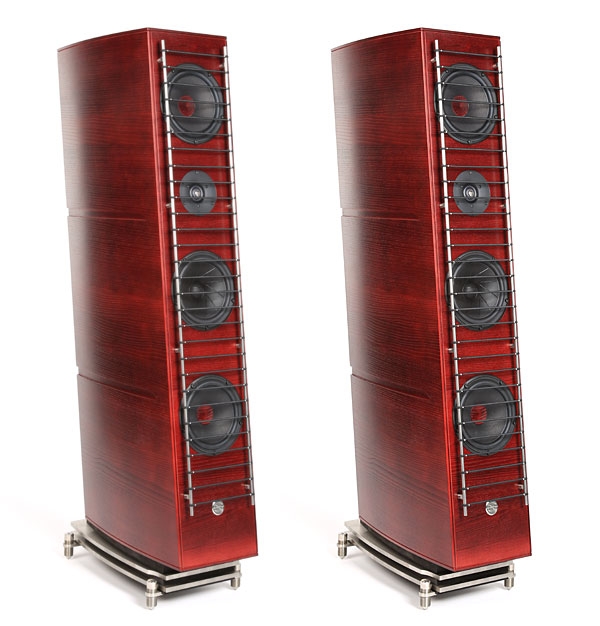| Columns Retired Columns & Blogs |
Quote:
"The soft diaphragm is terminated with rubber roll surrounds not only at its circumference, as usual, but also at a central, stationary, sharp-pointed phase plug."
I don't understand this. Tweeters are generally not terminated with rubber rolls and this one is no exception. The picture shows a one piece coated textile dome assembly, just like every other ScanSpeak and Vifa ring radiator tweeter I've ever seen. Since the large rolls are designed to be the actual radiating surfaces , I think rubber would be the last material you'd want to use for this purpose.
As for the performance...I guess you're being "diplomatic" here..but I see a system with serious flaws in its design. The specs describe this as a 3 way speaker, but the individual driver curves reveal it to actually be a 2-1/2 way system. The so called "midrange driver"isn't really a midrange at all. It's a woofer/midrange, since it is being fed all the spectral energy right up to the tweeter crossover point, including all the bass. At least, the impedance curve gives no indication of an electrical crossover at 250Hz And what exactly is the deal with the huge response dip at the tweeter crossover? Did they run into the well known problem of using a ring radiator tweeter at too low a frequency? It's no secret that 2nd order distortion in this type of tweeter rises quickly under 2.5 kHz, which is why this tweeter performs best when crossed over at or above 3kHz. But then, there's the problem of trying to push a 7" bass/midrange beyond 3kHz. It seems to me this all could have been avoided by using a real midrange driver; e.g., 5" with a true bandpass filter, or choosing a different tweeter that could be crossed in at a lower frequency. To me, this speaker has major flaws, inexcusable at $39,000.











































